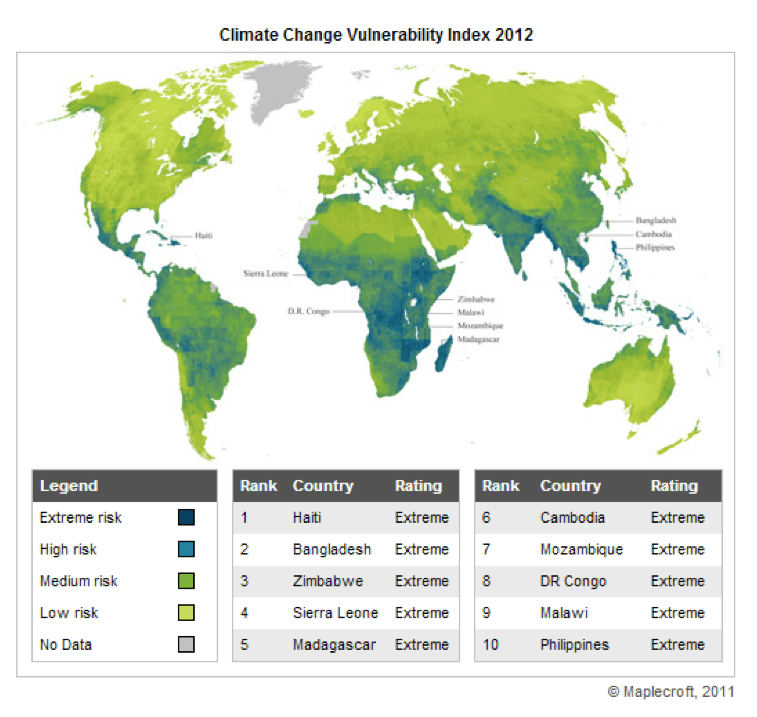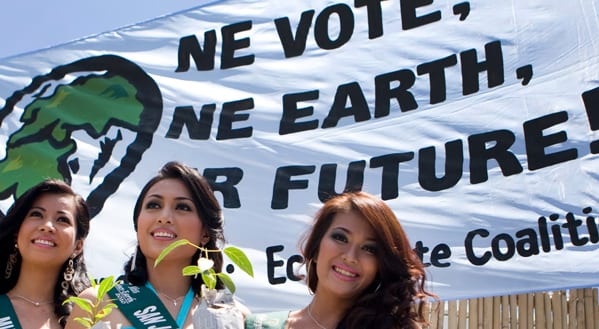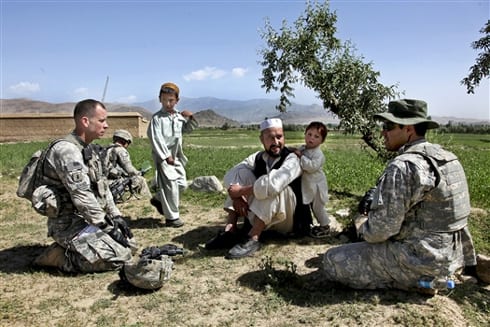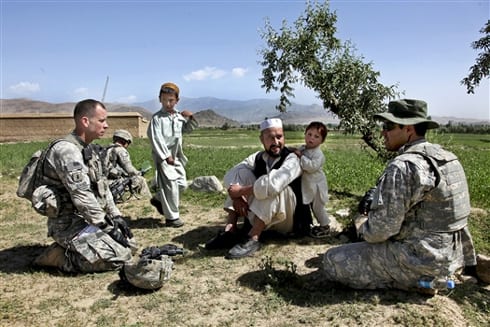by Katherine Cincotta
The Miss Earth Pageant: A prime example of cultural diplomacy used to increase awareness of environmental issues, or a standard beauty pageant that only pays lip service to environmental issues?
The pageant, held annually in the Philippines, has two primary goals. The first is to “…have its candidates and winners actively promote and get involved in the preservation of the environment and the protection of Mother Earth.” The pageant winner, chosen from a group representing nearly 100 nations, agrees to commit a year of service promoting environmental projects around the world, such as cleaning up beaches or planting trees with a community.
 Environmental diplomacy is what first comes to mind when I hear “Miss Earth;” a pageant that showcases the environmental concerns and projects from diverse countries.
Environmental diplomacy is what first comes to mind when I hear “Miss Earth;” a pageant that showcases the environmental concerns and projects from diverse countries.
In prior years the pageant did a fair job of incorporating environmentalism into its production. The 2008 pageant, for example, included montages of the contestants’ projects, as well as questions directly related to the environment. In 2012, however, much of the environmental focus in the pageant had been cut down. There were several shorter montages of contestants mentioning their environmental goals briefly. Overall, the pageant generally progresses as any other would, with an assortment of clothing changes, and not much else. The sole question asked of the contestants in the 2012 pageant was: “what would you consider your defining moment as a woman?” Consistent with the rest of the pageant, the word “environment” was barely mentioned in the responses.
The second goal of the pageant is to “…showcase and promote various tourist destinations.” The promotion of diverse destinations would give each location an opportunity to showcase how they are specifically impacted by environmental issues. Thus far attempts to hold the pageant in locations outside of the Philippines have generally fallen through. Going into the thirteenth year of the pageant, Miss Earth has only successfully been held outside of the Philippines once; when it was held in Vietnam in 2010.
As one of the largest pageants in the world, behind Miss World and Miss Universe, Miss Earth has the potential to draw a large audience. In addition to the potential economic benefits, hosting the pageant would allow a country to highlight its culture, as well as its own specific environmental concerns. For example, if the pageant were held in Haiti, the country could convey their struggle with natural disasters and how they have been impacted by climate change.
 Climate change is currently one of the most pressing environmental concerns globally. Many of the countries that are most vulnerable to the impacts of climate change, such as Bangladesh, Malawi and Madagascar, would benefit from hosting Miss Earth to draw attention to the concerns and cultures of their small country. Assuming the pageant airs internationally, it has the potential to reach millions of viewers. This begs the question, which countries actually broadcast it? The Miss World Pageant is viewed by an estimated 2 billion people a year globally, and over 1 billion watch Miss Universe. The numbers on Miss Earth, meanwhile, are much more difficult to track down. Though the pageant claims to be one of the largest in the world, how many people globally are aware that it exists? What can be done to increase its viewership?
Climate change is currently one of the most pressing environmental concerns globally. Many of the countries that are most vulnerable to the impacts of climate change, such as Bangladesh, Malawi and Madagascar, would benefit from hosting Miss Earth to draw attention to the concerns and cultures of their small country. Assuming the pageant airs internationally, it has the potential to reach millions of viewers. This begs the question, which countries actually broadcast it? The Miss World Pageant is viewed by an estimated 2 billion people a year globally, and over 1 billion watch Miss Universe. The numbers on Miss Earth, meanwhile, are much more difficult to track down. Though the pageant claims to be one of the largest in the world, how many people globally are aware that it exists? What can be done to increase its viewership?
One reason that Miss Earth may not yet have reached its full viewership potential is funding. Of the five main sponsors of the pageant, Hewlett Packard is the most notable. As one of the Top 25 “greenest” companies in the world according to Newsweek, HP has the ability to influence and collaborate on pageant events. If other green corporations were similarly willing to sponsor Miss Earth, the necessary funds may allow the pageant to be held in a variety of locations, and to reach its full potential as an environmental public diplomacy platform. Other companies that made Newsweek’s list include Google and McGraw-Hill, two companies that would be able to use their marketing platforms to help promote the pageant.
In addition to funding, another constraint that would prevent some countries from hosting Miss Earth is  cultural barriers. In particular, many Muslim countries (such as Bangladesh) have outlawed pageants altogether. Though it may not be possible for every country to host the pageant that does not mean citizens of every country cannot get involved. In 2003 Miss Earth made headlines when Miss Afghanistan, Vida Samadzai, became the first Afghan woman to participate in a beauty pageant in 30 years, particular notice was given to her participation in the bikini portion of the pageant. In moderate countries, could it be possible to adapt the pageant to fit cultural norms? As the main goal of the pageant is spreading environmental awareness, could it still be effective? It may be beneficial if the pageant was first held in more liberal and environmentally conscious societies, such as Brazil so that smaller or somewhat more conservative countries could see the benefits that the pageant can bring with it.
cultural barriers. In particular, many Muslim countries (such as Bangladesh) have outlawed pageants altogether. Though it may not be possible for every country to host the pageant that does not mean citizens of every country cannot get involved. In 2003 Miss Earth made headlines when Miss Afghanistan, Vida Samadzai, became the first Afghan woman to participate in a beauty pageant in 30 years, particular notice was given to her participation in the bikini portion of the pageant. In moderate countries, could it be possible to adapt the pageant to fit cultural norms? As the main goal of the pageant is spreading environmental awareness, could it still be effective? It may be beneficial if the pageant was first held in more liberal and environmentally conscious societies, such as Brazil so that smaller or somewhat more conservative countries could see the benefits that the pageant can bring with it.
Because pageants are popular globally, and young girls aspire to be like pageant contestants, Miss Earth could create a platform for environmental diplomacy, particularly for the younger generations. Perhaps in part due to funding constraints and cultural barriers, the pageant unfortunately has not yet been able to reach its full potential public diplomacy and awareness-raising potential. In turn, the pageant overall currently seem somewhat superficial.
If changes were made, Miss Earth may have the potential to act as a subset of Cosmopolitan Constructivism, which Cesar Villanueva Rivas describes as “constructing long-lasting friendly relations among states by inviting their societies to learn from each other in the construction of cosmopolitan cultural attitudes.” In other words, with increased funding and more emphasis on environmentalism during the show, the Miss Earth pageant could allow people of different countries and cultures to establish common environmental interests or concerns. Could this realization of shared goals in turn lead to the creation of a platform on which environmental collaboration could take place?
The above post is from Take Five’s new Student Perspective series. Graduate students studying Cultural Diplomacy as Communication at the George Washington University are encouraged to think about themes such as youth, gender, health, climate, free press, and democracy, and write on how these themes relate to cultural diplomacy and to communication. The posts involve thoughtful commentary on the writer’s chosen theme, linking to class readings and discussions.





